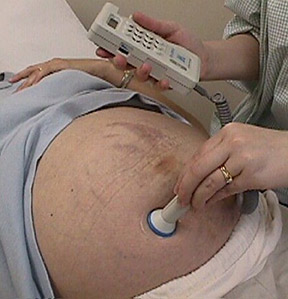Fetal heart beating is first visible on sonography around 6 weeks of gestation. The FHR is then usually around 100 to 120 beats per minute (bpm).
A slow fetal heart rate is called as fetal bradycardia and is usually defined as 1:
- FHR <100 bpm before 6.3 weeks gestation, or
- FHR <120 bpm between 6.3 and 7.0 weeks
A rapid fetal heart rate is called as fetal tachycardia and is usually defined as:
- FHR >160-180 bpm
Fetal bradycardia can occur due to
- conduction abnormalities in the fetus
- fetal head compression
- umbilical cord occlusion
- maternal exertion
and many other causes.
When the fetal heart rate is less than 90 beats per minute in the first trimester than it is considered not a good sign and the chances of the fetus survival is less.
Fetal tachycardia is defined as a heart rate above 160-180 beats per minute and typically ranges between 170-220 bpm
It can occur due to
- maternal hyperthyroidism
- maternal medications
- maternal infections
- In utero infections
- Fetal anemia
- Chromosomal abnormalities in the fetus like Trisomy 13 or Turner syndrome


